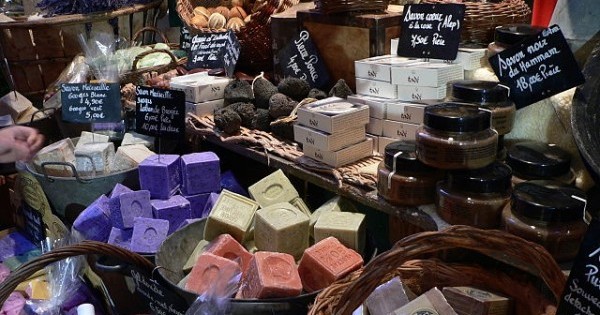
We are crawling with microbes. A patch of our skin the size of a cornflake makes a nice city for about a million bacteria. About a trillion bacteria live out their tiny lives on our skin. My pet bacteria differ from your pet bacteria, perhaps by quite a bit.
From the point of view of a microbe, the body is a world. The denizens of our fingertips have never met the denizens of our armpits, but if we shake hands, some of our fingertip tenants will change hands. Our home microbes include not only bacteria but also archaea (ar-KEY-a). Archaea are more different from bacteria than elephants are from worms. But like bacteria, they are prokaryotic (their cells lack a membrane-enclosed nucleus). Archaea are found in hot ocean vents as well as in our mouth, and along with bacteria and eukarya (you-CARRY-a), they represent one of the three great domains of life on earth. The eukaryotes include all life forms whose cells do contain a membrane-enclosed nucleus. We are eukaryotes. So are the frogs, the birds, the bumblebees.
Our mouth is home to a thousand species of microbes, with tongue, gum, and tooth providing unique ecological niches. The archaea associated with periodontal disease give off methane; they are methanogenic. They are the first archaea implicated in a human disease. (Note to dentist: I’m trying.)
Most microbes do us no harm. Indeed, we are in need of their smaller and more numerous lives. Without the microbes in our gut (about 100 trillion bacteria and methanogenic archaea), we would be unable to digest dinner.
People who struggle with irritable bowel syndrome have been treated again and again with antibiotics. Their gut microbes got out of balance, so were poisoned in microbial massacres directed at all the microbes, rather like burning down a forest to get rid of the poison oak. But now gastroenterologists have discovered a new treatment—to inject the dissolved feces of a healthy person into the patient’s intestine or colon so that a new community of microbes can get itself going. The colonizer microbes find a devastated, undefended landscape, and they move in and multiply. “Miracle” recoveries are mounting up.
Microbial massacres of course produce drug resistance. We now have bacteria that actually feed on antibiotics. Routine use of antibiotics in chicken feed, cattle feed, and pig feed, not to mention massively marketed antibacterial soaps, not to mention decades of antibiotic use against disease (including over-use and misuse), have pushed microbes to evolve resistant varieties. Tuberculosis (Mycobacterium tuberculosis) has returned with a vengeance. A strain of Methicillin-resistant Staphylococcus aureus (MRSA) rages intractably in hospitals. The campaign against malaria is plagued by insecticide-resistant mosquitoes and drug-resistant protozoan parasites (genus Plasmodium).
Some microbes are murderous. Hospitals must still use antibiotics. We must still take antibiotics if prescribed. But most microbes mind their own business and many do us good. It’s a hopeful thing that more and more farmers are raising beef on grass without antibiotic-spiked feed—and doing it profitably. As for Habitat Me, I’m looking askance at the dispensers of antibacterial hand and body wash on my kitchen and bathroom sinks. That settles it. I’m going back to old-fashioned soap and water.

